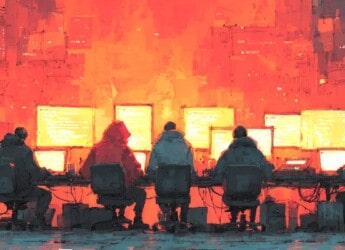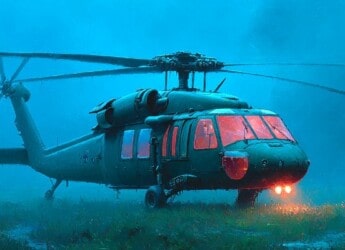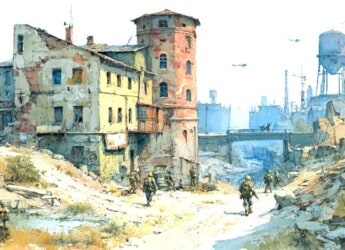Editor’s Note: This analysis offers a comprehensive examination of the current state of Russian military efforts, specifically focusing on the intense battles in Kursk Oblast and the broader strategic implications. With increased Russian counterattacks aimed at Ukrainian positions in this area, the report highlights the challenges both sides face as weather conditions threaten to hinder maneuverability. Significant international developments, including North Korean involvement, Iranian support for Russia, and Western military aid to Ukraine, are also discussed in the context of ongoing geopolitical tensions.
For those seeking to grasp the full scope of this evolving landscape, the complete updates from the Institute for the Study of War serve as an invaluable resource.
Content Assessment: Racing Against Winter - Russia’s Escalating Offensive in Kursk Oblast
Information - 92%
Insight - 93%
Relevance - 91%
Objectivity - 94%
Authority - 95%
93%
Excellent
A short percentage-based assessment of the qualitative benefit expressed as a percentage of positive reception of the recent article from ComplexDiscovery OÜ titled, "Racing Against Winter: Russia’s Escalating Offensive in Kursk Oblast."
Background Note: ComplexDiscovery’s staff offers distinctive perspectives on the Russo-Ukrainian war and Iran-Israel conflict, informed by military experience on the West German, East German, and Czechoslovakian border during the Cold War and in Sinai as part of Camp David Accord compliance activities. This firsthand regional knowledge has been further enhanced by recent staff travels to Eastern European countries, including Estonia, Latvia, Lithuania, and Poland. These visits have provided up-to-date, on-the-ground insights into the current geopolitical climate in regions directly impacted by the ongoing conflict.
Combined with cybersecurity, information governance, and eDiscovery proficiency, this multifaceted experience enables comprehensive analysis of these conflicts, including the critical impact of cyber warfare, disinformation, and digital forensics on modern military engagements. This unique background positions ComplexDiscovery to provide valuable insights for conflict-related investigations and litigation, where understanding the interplay of technology, data, and geopolitical factors is crucial.
Russo-Ukrainian Conflict Update*
Racing Against Winter: Russia’s Escalating Offensive in Kursk Oblast
ComplexDiscovery Staff
As the Ukrainian frontlines brace for the onset of fall rains and winter’s chill, time is running out for Russia’s forces in Kursk Oblast. With each passing day, the window to secure crucial territorial gains narrows as the terrain transforms into a muddy quagmire. The urgency of Russia’s offensive operations suggests a growing recognition that this battlefield’s shifting conditions could define the next phase of the war—and potentially shape its broader outcome. But can Russia’s overstretched military, now suffering staggering casualties, regain momentum before it’s too late?
Key Military Developments: Kursk Oblast Offensive
Russian military efforts to reclaim Ukrainian-held territories in Kursk Oblast saw significant intensification on October 10–11, 2024. Russian forces, supported by elements of the 155th and 810th Naval Infantry Brigades, advanced along several axes, attempting to eliminate Ukrainian salients. Recent geolocated footage confirmed Russian forces reaching central Kremyanoye and Zeleny Shlyakh, while reported envelopment operations near Lyubimovka suggest an effort to encircle Ukrainian troops.
Despite these gains, there has been no confirmed evidence of Russian forces conducting a battalion-sized mechanized assault, as claimed by Russian milbloggers. Some sources allege that two Ukrainian battalions in Korenevsky Raion have been encircled, though the Institute for the Study of War (ISW) has not observed verification of these reports. Russian counterattacks have primarily targeted Ukrainian positions around Glushkovsky, Korenevsky, and Sudzhansky Raions, seeking to regain lost ground ahead of the impending seasonal rains that could halt mechanized warfare.
Russian Casualties: A Growing Concern
The toll on Russian forces continues to mount at unprecedented rates. On October 9, a senior U.S. defense official revealed that Russian forces have now suffered over 600,000 casualties since the full-scale invasion of Ukraine began in February 2022. This staggering figure marks a dramatic increase from prior U.S. intelligence estimates, which indicated approximately 315,000 Russian casualties as of December 2023. The official also noted that the past month (from early September through early October 2024) has been the deadliest period for Russian forces in the entire war. These casualty rates underscore the significant strain on Russian manpower, potentially complicating the Kremlin’s ability to sustain prolonged military operations.
The heavy toll on Russian forces, now further exacerbated by recent losses in Kursk Oblast and other fronts, reflects the intense combat operations and the operational strain on an already overextended military. The deployment of Russian Airborne (VDV) and Naval Infantry units in Kursk underscores Moscow’s attempt to achieve swift results before deteriorating weather halts further offensives.
Russian Missile and Drone Campaign
Russian forces have continued their air and missile strikes targeting Ukraine’s critical infrastructure and civilian areas. On the night of October 10–11, a series of missile and drone attacks were launched, targeting multiple Ukrainian regions, including Mykolaiv and Odesa. Russian strikes have notably focused on Ukrainian port infrastructure, damaging vessels and increasing shipping insurance rates. This pressure aims to disrupt Ukraine’s grain exports and weaken international confidence in Ukraine’s maritime routes.
In addition, reports from Dnipropetrovsk confirm that Russian missile strikes have damaged Patriot air defense systems, marking them as a primary target due to their effectiveness in countering Russian aviation operations.
Strategic Context: Russian Motivations and Challenges
Russia’s intensified push in Kursk Oblast appears driven by the necessity to secure territorial gains before the arrival of the poor weather in late 2024, which could render the terrain unsuitable for large-scale movements. Russian sources indicate that some areas within Kursk are already experiencing limited muddy conditions, complicating operations for both sides. Moscow seems intent on resolving the situation before Ukrainian forces entrench themselves further, which would impede Russian advances during the colder months.
General Oleksandr Syrskyi, Commander-in-Chief of Ukrainian forces, noted that Russia has redeployed approximately 50,000 troops from other theaters, including Zaporizhia and Kharkiv, to reinforce Kursk Oblast. These redeployments have reportedly weakened Russian readiness on other fronts. Ukrainian defensive positions in Kursk are becoming more fortified, increasing the likelihood that the area will remain contested into 2025. This would force Russia to either divert additional resources or risk losing the strategic advantage.
International Military Assistance
Western countries continue to provide crucial support to Ukraine amid these escalations. On October 11, Germany, Belgium, Denmark, and Norway announced a 1.4 billion euro military aid package, including the transfer of advanced air defense systems such as the IRIS-T and Skynex, alongside armored vehicles and combat drones. This assistance is part of an ongoing effort to strengthen Ukraine’s defense capabilities and maintain its resilience in the face of sustained Russian assaults.
Norway has allocated an additional $90 million for defense projects aimed at producing materiel for Ukraine, while the Czech Republic has committed to delivering 500,000 rounds of 155-mm artillery shells by the end of 2024. France also plans to supply Ukraine with up to 20 Mirage 2000-F5 fighter jets by early 2025, which will further enhance Ukrainian air capabilities.
Iranian Military Support to Russia
With growing Russian casualties and manpower shortages, Tehran’s military support has become increasingly important to Moscow’s war effort. Reports from Iranian media affiliated with the Islamic Revolutionary Guards Corps (IRGC) on October 8 indicated that Russia had provided Iran with an S-400 air defense system and a squadron of Su-35 fighter jets. Although these claims have not been independently verified, they signal a deepening military relationship between the two countries.
Iran has been a key supplier of military hardware to Russia throughout the conflict, including the provision of Shahed drones, which have been extensively used by Russian forces to strike both frontline and rear Ukrainian positions. The reported transfer of sophisticated air defense systems like the S-400 could further enhance Iran’s military capabilities while allowing Moscow to secure further Iranian support in its conflict with Ukraine.
North Korean Military Involvement
Amid these developments, reports emerged of North Korean military personnel training in Russia for potential deployment in Ukraine. Ukrainian and South Korean officials have noted that several thousand North Korean soldiers are training within Russia, and some may soon be deployed to the frontlines. While Ukrainian intelligence suggests that North Korean officers are currently observing the battlefield, they have not yet engaged in active combat.
The potential deployment of North Korean forces, even in a limited capacity, could provide Russia with additional manpower to bolster its operations. However, the quality and interoperability of these units remain uncertain. Their presence could also present new opportunities for Ukrainian exploitation, particularly if the North Korean units lack familiarity with the Ukrainian battlefield.
Donetsk Focus: Impact of Kursk Offensive on Other Fronts
The Russian military’s preoccupation with Kursk Oblast has affected its broader operational objectives, particularly in Donetsk Oblast. By redirecting forces to Kursk, Russia has weakened its offensive tempo in other critical sectors, including the Pokrovsk direction. Russian forces’ inability to make substantial progress in Kursk threatens to exhaust their combat power before they can be redeployed to Donetsk, where the culmination of Russia’s summer offensive is already anticipated in the coming months.
In Donetsk Oblast, limited Russian advances were reported near Toretsk and Kurakhove. The Russian strategy in Donetsk remains focused on pushing Ukrainian forces back and securing key logistic routes, but the lack of significant progress in both Kursk and Donetsk highlights the limitations of the Russian military’s current manpower and material resources.
Russian Recruitment and Mobilization Efforts
Faced with mounting casualties and a deteriorating frontline, Russia has increasingly turned to recruiting older volunteers to sustain its military efforts. Recent reports indicate that over 75 percent of new recruits in some Russian units are over 50 years old. Financial incentives for enlistment have been raised in several regions, and efforts to recruit foreign nationals and volunteers from marginalized groups continue.
Chechen leader Ramzan Kadyrov has also suggested that “problem youth” in Chechnya be given the choice to serve prison sentences or join military units in Ukraine, further illustrating the Kremlin’s desperation to replenish its ranks.
Chechen Political Dispute
Amid the pressures of war, Russia faces internal political instability. Chechen leader Ramzan Kadyrov declared a “blood feud” on October 10 against several prominent Russian legislators, accusing them of plotting to take over Russia’s largest online retailer, Wildberries, and attempting to assassinate him. Kadyrov’s public declaration underscores growing tensions between the Chechen leader and elements of Russia’s political elite. Such disputes threaten to weaken Moscow’s efforts to maintain internal cohesion during an already strained military campaign.
Winter’s Deadline: Russia’s Last Chance to Shift the War in Kursk
As the ground hardens and the skies darken over Kursk Oblast, the clock ticks for Russian forces desperately seeking to regain momentum. Faced with growing casualties, severe manpower shortages, and increasing reliance on foreign support from Iran and North Korea, Russia’s capacity to secure a decisive breakthrough before poor weather hampers mobility remains in doubt. In a war where timing and terrain are as critical as strategy and manpower, it remains to be seen whether Russia can overcome both Ukraine’s determined resistance and nature’s impending challenges. With winter approaching, the question of whether Russia has enough time left to change the course of the war is more urgent than ever.
News Sources
As a leading source for cybersecurity, information governance, and legal discovery insights, including international investigations and litigation, ComplexDiscovery OÜ recognizes the importance of awareness regarding alleged and documented criminal acts, particularly in the context of the Russia-Ukraine conflict. While we, following the lead of the Institute for the Study of War (ISW), do not provide detailed coverage of war crimes in our primary reports, we encourage professionals within the eDiscovery ecosystem to stay informed about these activities. This awareness is crucial for understanding potential future legal actions and responsibilities.
Detailed Reporting with Maps for October 10-11, 2024, from the ISW – Mouseover to Scroll
Russo - Ukrainian War - October 10-11 2024 UpdateReview the Detailed Reporting and Maps PDF
About the Institute for the Study of War Research Methodology
ISW’s research methodology relies on both primary and secondary sources, enabling researchers to develop a comprehensive understanding of the situation on the ground. In order to analyze military and political developments in any given area, ISW’s research analysts must wholly understand the systems of enemy and friendly forces. They must also understand the population demographics, physical terrain, politics, and history of that area. This lays the analytical foundation for understanding the reasons for particular developments and fulfilling their assigned research objectives. ISW analysts also spend time in places like Iraq, Afghanistan, and elsewhere in order to gain a better understanding of the security and political situation and to evaluate the implementation of current strategies and policies. Our researchers compile data and analyze trends, producing a granular analysis of developments in areas of research, producing an accurate, high-resolution, timely, and thorough picture of the situation. ISW’s research methodology guarantees its success and commitment to improving the nation’s ability to execute military operations, achieve strategic objectives, and respond to emerging problems that may require the use of American military power.
About the Institute for the Study of War
The Institute for the Study of War advances an informed understanding of military affairs through reliable research, trusted analysis, and innovative education. They are committed to improving the nation’s ability to execute military operations and respond to emerging threats in order to achieve U.S. strategic objectives. ISW is a non-partisan, non-profit, public policy research organization.
Learn more, get involved, and contribute today.
Additional Reading
- From Dissent to OSINT? Understanding, Influencing, and Protecting Roles, Reputation, and Revenue
- [Annual Update] International Cyber Law in Practice: Interactive Toolkit
- Data Embassies: Sovereignty, Security, and Continuity for Nation-States
Assisted by GAI and LLM Technologies
* Sourced and shared with direct express permission from the Institute for the Study of War (ISW).
Source: ComplexDiscovery OÜ


























